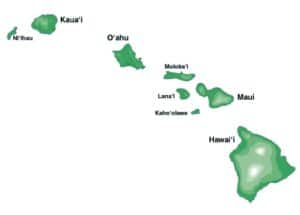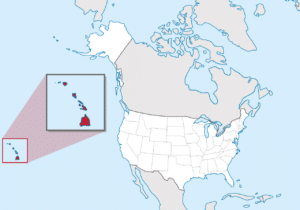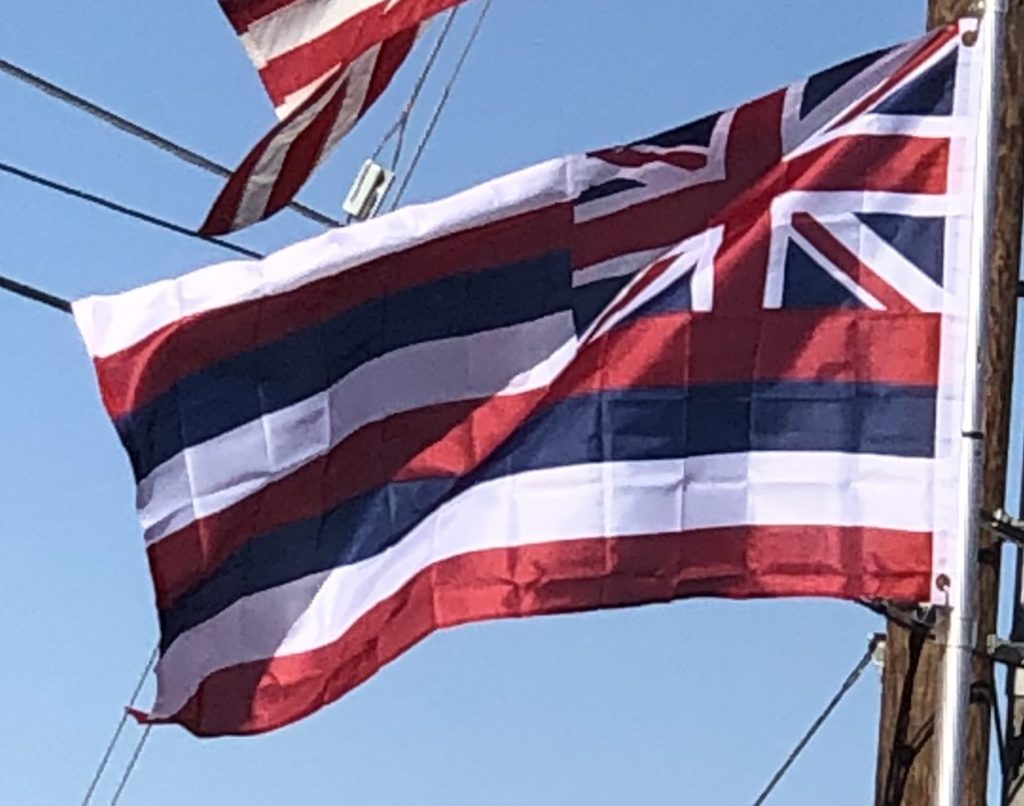Introduction:
Hawai’i is the 50th and most recent state to have joined the United States, having received statehood on August 21, 1959. Hawai’i is the only U.S. state located in Oceania, the only U.S. state located outside North America, and the only one composed entirely of islands. It is the northernmost island group in Polynesia, occupying most of an archipelago in the central Pacific Ocean.
The state encompasses nearly the entire volcanic Hawai’ian archipelago, which comprises hundreds of islands spread over 1,500 miles. At the southeastern end of the archipelago, the eight main islands are—in order from northwest to southeast: Niʻihau, Kauaʻi, Oʻahu, Molokaʻi, Lānaʻi, Kahoʻolawe, Maui, and the Island of Hawaiʻi.

The last is the largest island in the group; it is often called the “Big Island” or “Hawaiʻi Island” to avoid confusion with the state or archipelago. The archipelago is physiographically and ethnologically part of the Polynesian subregion of Oceania.

Hawai’i’s diverse natural scenery, warm tropical climate, abundance of public beaches, oceanic surroundings, and active volcanoes make it a popular destination for tourists, surfers, biologists, and volcanologists. Because of its central location in the Pacific and 19th-century labor migration, Hawai’i’s culture is strongly influenced by North American and East Asian cultures, in addition to its indigenous Hawai’ian culture. Hawai’i has over a million permanent residents, along with many visitors and U.S. military personnel. Its capital is Honolulu on the island of Oʻahu.
Origin of the Name:
The state of Hawai’i derives its name from the name of its largest island, Hawaiʻi. A common Hawai’ian explanation of the name of Hawaiʻi is that was named for Hawai’iloa, a legendary figure from Hawai’ian myth. He is said to have discovered the islands when they were first settled.
The Hawai’ian language word Hawaiʻi is very similar to Proto-Polynesian *Sawaiki, with the reconstructed meaning “homeland”. Cognates of Hawaiʻi are found in other Polynesian languages, including Māori (Hawaiki), Rarotongan (ʻAvaiki) and Samoan (Savaiʻi) . According to linguists Pukui and Elbert, “[e]lsewhere in Polynesia, Hawaiʻi or a cognate is the name of the underworld or of the ancestral home, but in Hawai’i, the name has no meaning”.
Spelling of State Name:
A somewhat divisive political issue arose in 1978 when the Constitution of the State of Hawaii added Hawai’ian as a second official state language. The title of the state constitution is The Constitution of the State of Hawaii. Article XV, Section 1 of the Constitution uses The State of Hawaii. Diacritics were not used because the document, drafted in 1949, predates the use of the ʻokina (ʻ) and the kahakō in modern Hawai’ian orthography. The exact spelling of the state’s name in the Hawai’ian language is Hawaiʻi. In the Hawaii Admission Act that granted Hawai’ian statehood, the federal government recognized Hawaii as the official state name. Official government publications, department and office titles, and the Seal of Hawaii use the traditional spelling with no symbols for glottal stops or vowel length. In contrast, the National and State Parks Services, the University of Hawaiʻi and some private enterprises implement these symbols. No precedent for changes to U.S. state names exists since the adoption of the United States Constitution in 1789. However, the Constitution of Massachusetts formally changed the Province of Massachusetts Bay to the Commonwealth of Massachusetts in 1780, and in 1819, the Territory of Arkansaw was created but was later admitted to statehood as the State of Arkansas.
Geography:
There are eight main Hawai’ian islands, seven of which are permanently inhabited. The island of Niʻihau is privately managed by brothers Bruce and Keith Robinson; access is restricted to those who have permission from the island’s owners.
